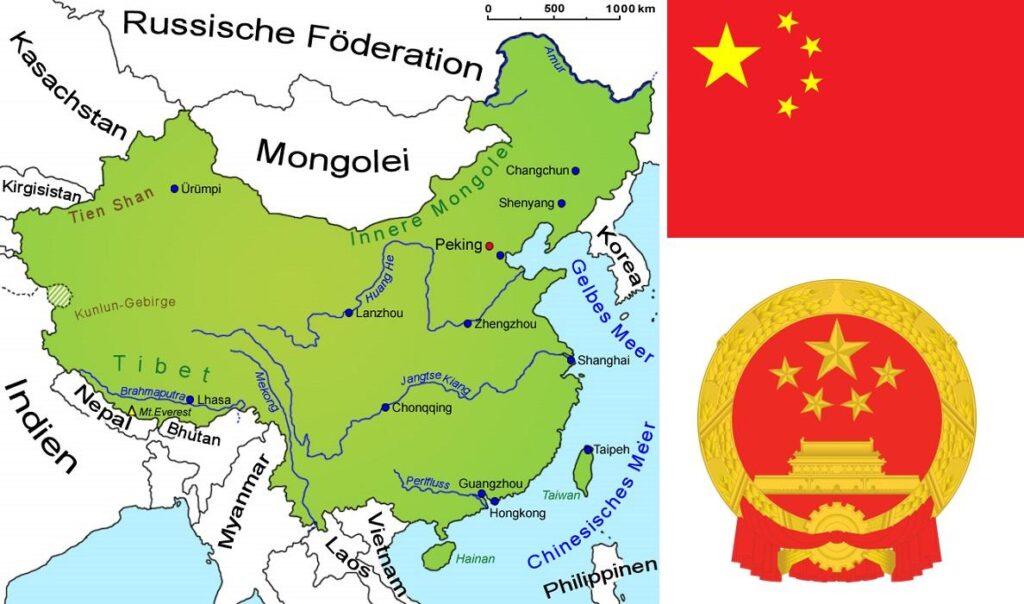China’s Shandong Pilot Free Trade Zone: Jinan Area Advances as a Key Belt and Road Portal
In a bold move to enhance its global trade footprint, China has positioned the Jinan Area of the Shandong Pilot Free Trade Zone as a strategic gateway along the Belt and Road Initiative (BRI). Launched with the intention of fostering economic collaboration and regional connectivity, this initiative aims to facilitate trade and investment, not just within China’s borders, but across continents. The Jinan Area is set to play a pivotal role in this vision, leveraging its geographic advantages and burgeoning economic landscape to attract foreign investment and streamline customs procedures. As China’s economic policies evolve, the Shandong Free Trade Zone serves as a microcosm of the nation’s aspirations to redefine international trade and bolster its position as a global economic powerhouse. In this article, we delve into the key features of the Jinan Area, examining its potential impacts on local and international markets, and how it integrates into the larger Belt and Road framework.
Exploring Economic Opportunities in the Shandong Pilot Free Trade Zone
The Shandong Pilot Free Trade Zone, particularly in the Jinan area, serves as a dynamic platform that fosters a myriad of economic opportunities, enhancing both domestic and international trade. This strategic location benefits from a combination of favorable policies, streamlined administrative processes, and significant investments aimed at stimulating various sectors. Among the key areas poised for growth are:
- Manufacturing and High-Tech Industries: The zone promotes innovation through advanced manufacturing initiatives, creating a conducive environment for high-tech companies.
- Logistics and Supply Chain Management: With its advantageous geographical position, it offers enhanced logistics capabilities that are essential for businesses operating within the Belt and Road Initiative.
- Financial Services: A series of financial policies simplifies investment processes, thereby attracting both domestic and foreign capital.
Moreover, local government initiatives encapsulate measures that support entrepreneurship and international collaboration, particularly with Belt and Road countries. For businesses, this provides a unique opportunity to tap into new markets and build partnerships. The following table highlights some of the incentives available for specific sectors:
| Sector | Incentive | Details |
|---|---|---|
| Technology | Tax Breaks | Exemptions on corporate income tax for qualified high-tech firms. |
| Trade | Customs Facilitation | Faster customs clearance for import/export activities. |
| Logistics | Financial Support | Subsidies for supporting warehousing and transport services. |
Navigating Challenges for Businesses in the Jinan Area
In the dynamic landscape of the Jinan area, businesses face a unique set of challenges as they strive to capitalize on the opportunities presented by the Pilot Free Trade Zone. The interplay of local regulations and national policies can create a complex environment for entrepreneurs. Key hurdles include:
- Regulatory Compliance: Navigating the layers of local and national regulatory requirements often demands significant time and resources.
- Market Competition: As the Belt and Road Initiative gains traction, increased competition may challenge existing businesses to innovate continuously.
- Cultural Differences: Understanding and adapting to local business practices are essential for foreign firms seeking to establish a foothold.
Moreover, infrastructure development in the Jinan area plays a crucial role in mitigating some of these challenges. With ongoing investments in transportation and logistics, businesses may find it easier to access both domestic and international markets. A comparative overview of recent infrastructure projects includes:
| Project Name | Expected Completion | Estimated Impact |
|---|---|---|
| High-Speed Rail Expansion | 2024 | Enhanced connectivity to major cities |
| New Logistics Park | 2025 | Increased efficiency in goods transportation |
| Smart Port Development | 2023 | Boost in import/export capabilities |
Strategic Recommendations for Strengthening Belt and Road Initiatives
To enhance the effectiveness of the Belt and Road initiatives, it is essential to adopt a multi-faceted strategy that fosters sustainable economic growth and strengthens international partnerships. Key recommendations include:
- Investment in Infrastructure: Encouraging public-private partnerships to enhance transport and logistics infrastructure, with an emphasis on digital connectivity.
- Focus on Green Development: Promoting eco-friendly projects that align with global sustainability goals, thus attracting environmentally-conscious investors.
- Cultural Exchange Programs: Implementing initiatives that promote cultural understanding and public diplomacy to support stronger bilateral ties.
Furthermore, the integration of advanced technologies in trade practices represents a significant opportunity for growth. Prioritizing the following areas can lead to improved efficiency and transparency:
- Blockchain Technology: Utilizing blockchain for secure and transparent transactions across all participating nations.
- Smart Logistics Solutions: Investing in AI and IoT to streamline supply chain management and optimize resource allocation.
- Capacity Building: Offering training programs that equip local businesses with the necessary skills to engage in international trade.
Concluding Remarks
In conclusion, the establishment of the China (Shandong) Pilot Free Trade Zone in the Jinan Area marks a significant milestone in the country’s economic strategy and its initiatives under the Belt and Road Initiative. With its strategic location, innovative policies, and commitment to fostering a conducive business environment, the Jinan Area is poised to become a crucial hub for international trade and investment. As China continues to promote greater regional connectivity and collaboration, the implications of this development extend beyond provincial borders, influencing economic dynamics on a global scale. Stakeholders, businesses, and investors alike will be closely watching the evolution of this free trade zone, as it represents not only opportunities for growth but also challenges that will require robust strategies to navigate. As the Jinan Area embarks on this new chapter, its success will be measured by its ability to balance globalization with local development, positioning itself as a key player in the ever-evolving landscape of international trade.
